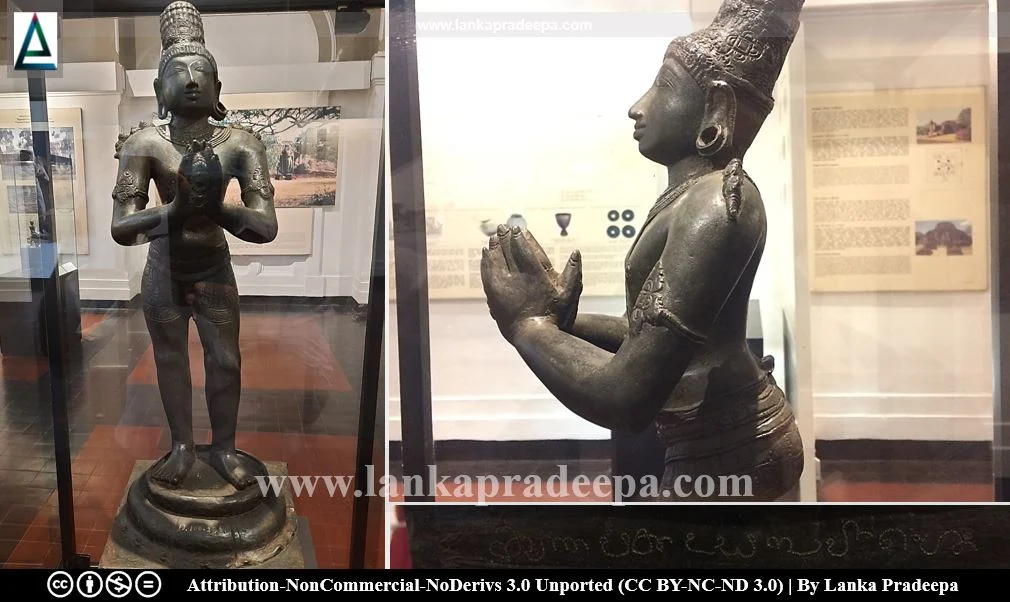
The bronze representing Candikesvara or Chandesvara (Tamil: சண்டேஸ்வரர்; Sinhala: චණ්ඩිකේශ්වර) is presently on the display in the Gallery of Polonnaruwa Period in Colombo National Museum, Sri Lanka. It was discovered from the premises of Siva Devale No. 5 in Polonnaruwa Ancient City (Coomaraswamy, 1914).
This solid cast bronze (copper) with a hollow pedestal is 75.5 cm in height. It represents Candikesvara, an apotheosized devotee of Siva who is always shown in worshipping attitude by the hands (Arunachalam, 2004; Coomaraswamy, 1914). Usually, he has a shrine in every Siva temple in the country as no worship of Siva is complete until the final honours are paid to this saint (Arunachalam, 2004). His story is found in the Periya Puranam (Coomaraswamy, 1914). Here, in this figure, he wears a characteristic short loincloth. The pedestal of the figure with hoops indicates that it was meant to be carried in procession. An inscription in a mixed Sinhalese and Grantha dialect/characters is found engraved on one side of the pedestal (Arunachalam, 2004; Coomaraswamy, 1914).
Transcript: Ganapati Usaba vamseNotes: Usaba is a Sinhalese word found in inscriptions, meaning excellent. Vamse (Sinhala: Vahanse) is an honorific title.Reference: Arunachalam, 2004
Scholars have dated this work to the 12th century A.D.
References
1) Arunachalam, P., 2004. Polonnaruwa bronzes and Siva worship and symbolism. Asian Educational Services. p.32.
2) Coomaraswamy, A., 1914. Bronzes from Ceylon, chiefly in the Colombo Museum. Series A. No. 1. Memoirs of the Colombo Museum/Ed. J. Pearson. Colombo: Horace Hart, Colombo. pp.12,16.
2) Coomaraswamy, A., 1914. Bronzes from Ceylon, chiefly in the Colombo Museum. Series A. No. 1. Memoirs of the Colombo Museum/Ed. J. Pearson. Colombo: Horace Hart, Colombo. pp.12,16.
Location Map
This page was last updated on 12 January 2023

